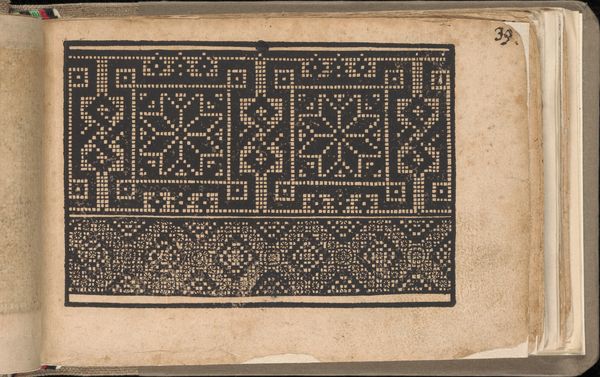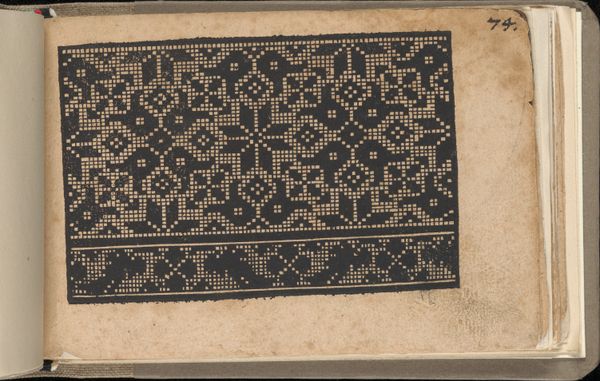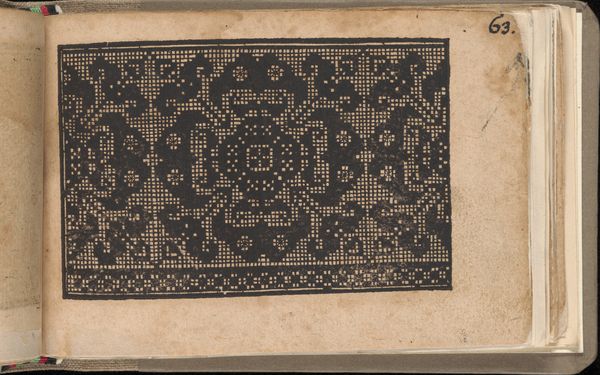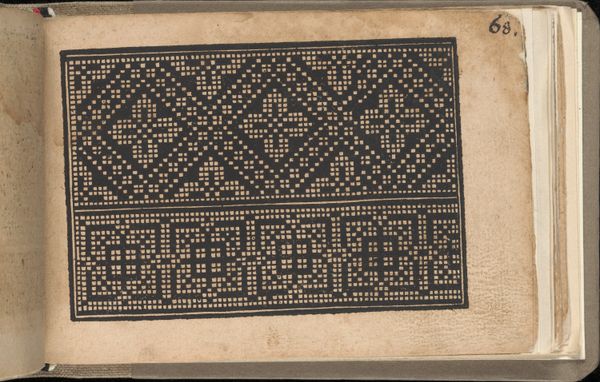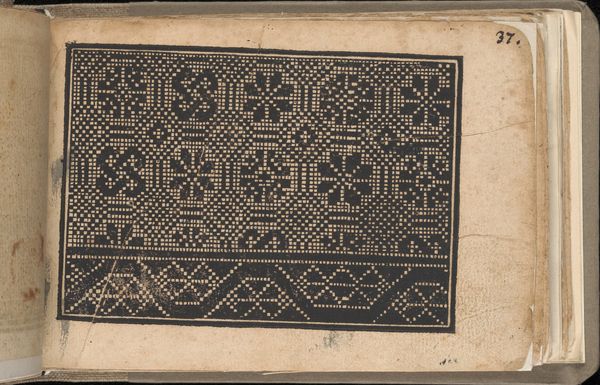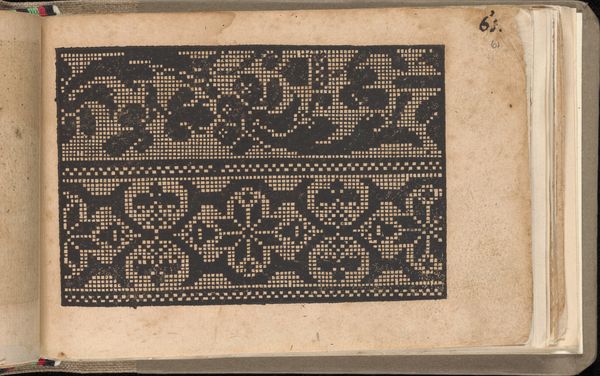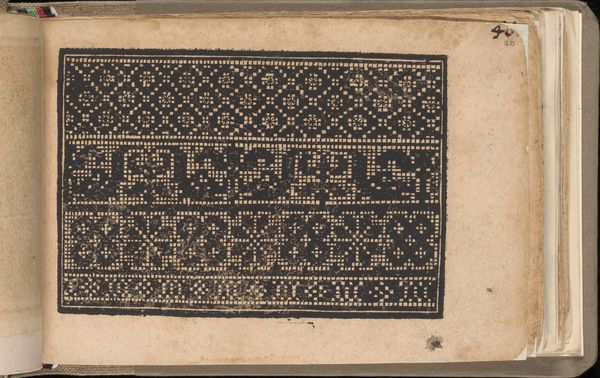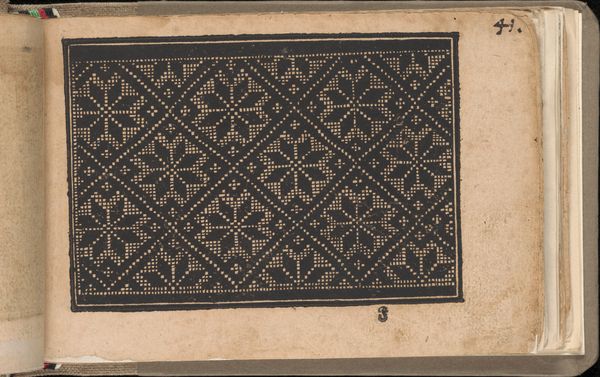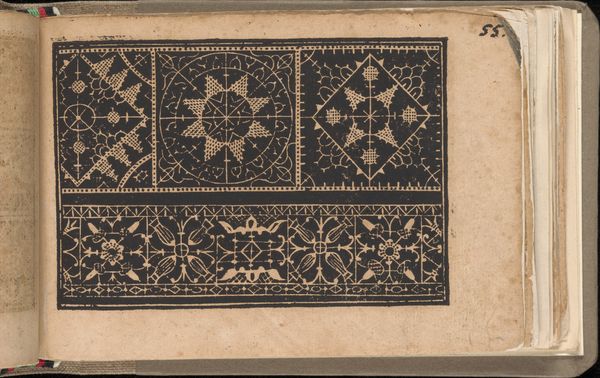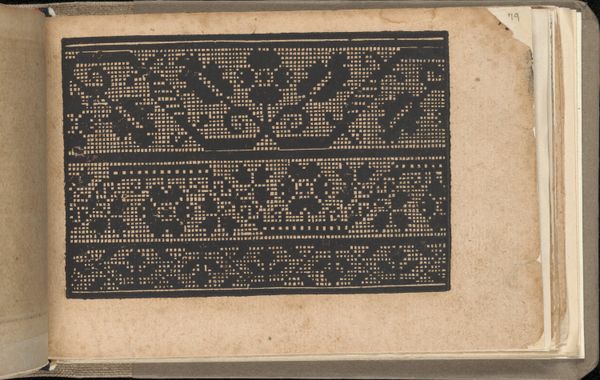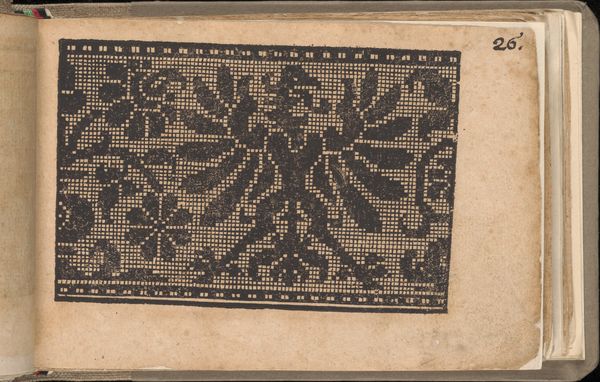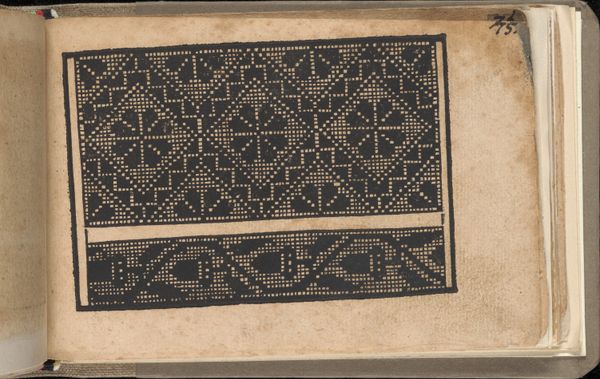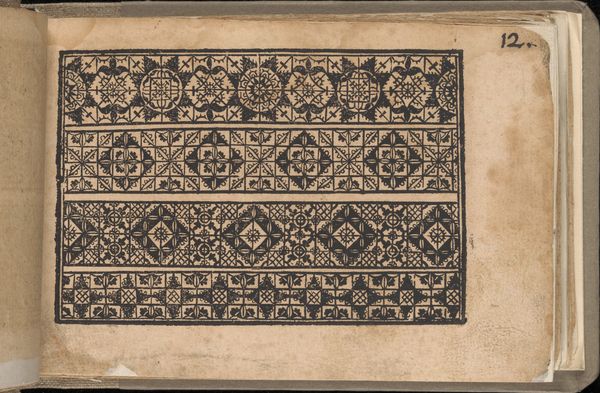
drawing, ornament, print, paper, engraving
#
drawing
#
ornament
# print
#
book
#
pattern
#
paper
#
11_renaissance
#
personal sketchbook
#
geometric
#
engraving
#
monochrome
Dimensions: Overall: 4 1/2 x 6 11/16 in. (11.5 x 17 cm)
Copyright: Public Domain
Curator: I find myself drawn into this fascinating page from "Schön newes Modelbuch", or "Beautiful New Pattern Book," created in 1608. It is a printed engraving showcasing different textile and embroidery patterns. Editor: The contrast immediately grabs me. The stark black ink against the aged paper gives the designs a sense of gravity. Almost a melancholic beauty, evoking ideas around craft labor as being black and white, hard work. Curator: Absolutely, and let’s contextualize that. Pattern books like this weren't just about aesthetics. They were crucial for disseminating design and technique across geographical and social boundaries. Think of it as a silent language shared amongst artisans and merchants of the Renaissance. It has obvious class dimensions here as well, dictating design access across lines of power. Editor: The geometric shapes feel so carefully considered, with a symbolic weight carried over from other cultures into the needlework of the day. Curator: Precisely! The patterns presented were often adapted and reinterpreted by local makers, telling a story of cultural exchange and hybridity. These shapes aren't isolated artistic expressions; they become integral parts of everyday life, embellishing clothing, linens, and decorative objects across class and cultural status. Editor: I also see echoes of other geometric traditions. We know, historically, artisans from different regions and religious backgrounds would migrate to or live as religious refugees within other nations—carrying traditions of, say, arabesque tiles to, say, needlepoint. These patterns must hold memories of that cross pollination. Curator: Indeed. What at first glance seems purely ornamental then reveals complex layers of economic, social, and personal history, allowing us to imagine the lives and hands that translated them into tangible works of art. In this way, patternmaking and distribution becomes its own statement about material access. Editor: That's what resonates with me. The engraving hints at the journey of ideas through images, offering glimpses into how cultural memory evolves. The geometric imagery, from antiquity to present use, acts as a persistent thread connecting people across time. Curator: Reflecting on the legacy of this engraving, I now understand why a closer look allows us to examine art and history in tandem to unpack stories of access and inequality in craft. Editor: For me, recognizing this piece encourages thoughtful attention toward the symbology within the every-day art objects that make up our lives, both now and across centuries.
Comments
No comments
Be the first to comment and join the conversation on the ultimate creative platform.
